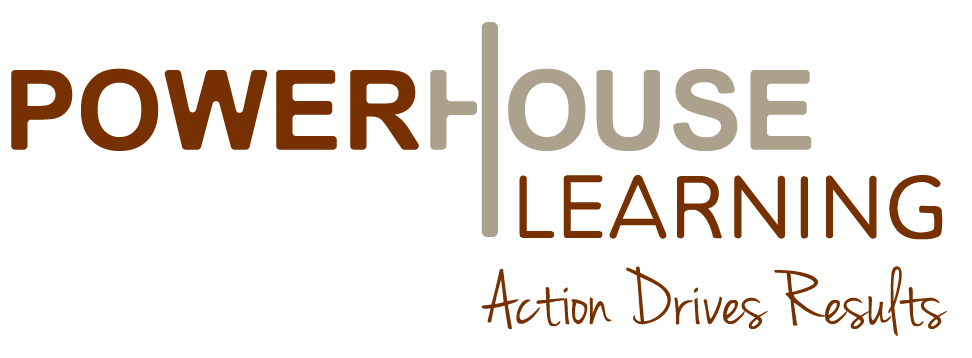The success of your business is in the hands of your people. They take hundreds--possibly thousands--of actions on your behalf every day, and if the sum total of all those actions is positive, you win. If the overall result is a negative, you lose.
We all know a company is only as good as its team, which is why the hiring process is critical as you build and grow out your organization. And everyone who has made a bad hire along the way knows that hiring the wrong person can cost you far more than time and money.
Consequences of Poor Hiring
We’ve all been warned about the cost of a bad hire, and that cost is more than just monetary. One marginal employee can throw an entire department into disarray. Being part of the management team, you end up investing your own time training them, retraining them, then possibly training them another way, counseling them, and then handling complaints from other employees. All this time, production is decreasing -- all for someone who has no future with your company.
Every time you hire someone who does not perform their job well, the entire organization suffers. Bad hires not only create customer ill will, but they affect the team who must work with them, causing stress and disruption in the entire company. Morale is lowered, productivity decreases, and absenteeism increases. And, your life gets miserable (and even worse, it causes your organization crash).
Avoid these these common (and costly) hiring blunders:
- Inadequate job description
- Hiring a “jack of all trades”
- Focusing solely on skills and experience, without considering culture fit or attitude aspects
- Not understanding the applicant qualities needed to excel with the current team
- “Winging” the interview
- Not having a true consistent interview process
- Failing to ask for enough references and/or not checking references sufficiently
Tips to Hiring Success
1. Ensure that human resources knows how to correctly carry out the hiring process. Finding the right person means making sure that all the components are in working order. Posting the job with the correct information, updated job descriptions, handling and organizing the applications and resumes, conducting interviews, personality profiling, performing background checks, checking references, and finally evaluating all of the information about the different candidates are all critical steps to this process each with its own unique requirements and skills.
2. Don't make the process more complicated than it needs to be. There isn't time for um pteen dozen interviews to make sure he is the one or she is perfection. Too many interviews can actually intensify unnatural behaviors and end up giving you artificial results anyway. Keep it simple!
pteen dozen interviews to make sure he is the one or she is perfection. Too many interviews can actually intensify unnatural behaviors and end up giving you artificial results anyway. Keep it simple!
3. Create relevant job descriptions. A good job description meets the need of each participant in the hiring process, identifies and describes the essential functions of a particular job, and sets the bar on the skills, education and experience necessary to fill the position. Job descriptions focus on 3 key factors: (1) Position Description: Describes the essential and marginal functions of a position. A well-written position description clearly, concisely and accurately documents the duties and responsibilities of a job; (2) Key Result Areas and Accountability: The most important piece of the hiring puzzle. It’s essential to align the key result areas with accountability to be clear on position needs. Select interview questions that will enable you to quickly determine if the candidate’s experience is relevant to your job opening; (3) Job Specifications: Describes education, experience, skills, knowledge required to perform a job. This is typically the piece that job seekers respond to when applying for the position.
4. Be clear about what your organization wants and needs. Do make sure you’re well defined about what the job entails and the skill set you need in the person who will fill the position.
5. Apply focused interviewing. Don’t get too creative with the interview questions. At this point do you really care what the applicants retirement dreams are in 25 years? Asking the applicant probing interview questions with your strong team members doing the interviewing - THAT is what tests the candidate’s ability to the job BEFORE you hire them. This means that the candidate must be able to explain exactly how they will deliver the performance standards defined in your job description. They must detail how they will do these in your company, with your resources, your culture, your budget, with your management style, with your customers. And of course they won’t be able to tell you this exactly but with their answers (or lack of detail in their answers), you will have a clear picture if they can do the job or not.
6. Look within your current employees. Don’t neglect to look inside your organization when you’re filling open positions. Employee referrals are a great source for potential hires because a current employee is likely to give a realistic preview to a candidate and is less likely to refer someone who will not be a positive reflection on themselves.
7. Referrals make the best hires — a fact that comes as no surprise to corporate recruiters. After all, it makes sense that the people closest to your best employees are also likely to be good employees. That’s why more and more forward-thinking HR departments are trying to optimize their employee referral programs (ERPs) to yield a greater number of high-quality referrals.
8. Explore different avenues of a candidate’s skills, knowledge and abilities. Managers should not just be relying on their own assessment but are getting well-rounded feedback. At the end of the day hiring decisions have to be made on qualifications. A well rounded panel is key to ensuring that.
9. Do your research. We always expect the candidate to have done their research on the company, but you need to be equally diligent about researching the candidate. This might involve not just checking references but looking at their social media accounts and web presence, as well as doing a background check.
10. Don’t be quick to hire based upon gut feel. Instead, take time in the interviewing process to let the prospective new hire get a feel for your culture and your company. Never oversell the company, but rather disclose problems and weaknesses within the department and/or organization so the candidate can make a good decision that won’t later be concerned by inconsistent messaging or practices. Above all, don’t be attracted by qualities that while they may be appealing on the surface, won’t ever make-up for a lack of character and integrity.
11. Test drive applicants before hiring. Consider trying out arrangements such as temp-to-perm, contract-to-hire or a working interview. This allows both you as the employer and the potential candidate a chance to see if there’s a good fit. Sometimes candidates aren’t good at interviewing but once they start working they are a rock star. Other times, we interview someone we love but they can’t begin to do the job. A few examples include: for sales a role play or a ride along; for marketing writing a short press release; for customer service put them on a few phone calls of at the front desk.
There was a time when simply hiring people with the needed skill set was the key to success, but not today. Today every organization must a have deliberate hiring process to consistently build a strong and aligned team and organizational culture. When you hire outstanding candidates and immerse them in a culture of empowerment, positivity, and collaboration, their skill sets--both tactical and emotional--will only expand and contribute more to your organization. Only then can you be sure they will continue to perform like the great hires you expected, and only then can you expect them to stay for the long run.
For more information on how intuitive strategies can help your organization with the interview process please contact Powerhouse Learning or Brandie Hinen at brandie@powerhouselearning.com.

